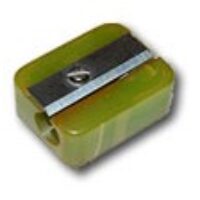I was checking some French using Google translator, and discovered that – contrary to my French teacher’s insistence back in high school – “La langue Francaise” means “English language”!
Of course one doesn’t expect perfection from machine translation, but this was different than the usual silly mistakes: a translation program ought to know the meaning of the name of a language it translates, after all. So can it be that Google, in its staggering growth to encompass all knowledge, has finally reached true intelligence and reasoned that the above translation is correct on some higehr level – the way Douglas Hofstadter pointed out in his immortal “Godel, Escher, Bach” that “Borscht“, when translated from the Russian, may need to be converted to “Campbell soup” to convey its ubiquity in the respective culture?
Nah… not likely. I actually played a little more – for instance, “La langue Francaise” in Italian, according to Google, means “Lingua inglese“, not “Lingua Italiana“. I suppose by posing such questions to the program one could map where the problem lies in its cognitive functions, like one tries to localize brain damage in a patient by mapping input/output relationships in an interview. So is Google Translator a conscious entity after all, albeit a brain-damaged one? 🙂

 Take the calendar application that came on this handheld. It has a number of shortcomings (more on these later) and one amusing quirk: most of the time when you click the calendar button it displays an empty screen with the phrase (no entries) at the center. Then, less than a second later, the actual entries for the day (in my hectic life, alas, there are always entries…) show up.
Take the calendar application that came on this handheld. It has a number of shortcomings (more on these later) and one amusing quirk: most of the time when you click the calendar button it displays an empty screen with the phrase (no entries) at the center. Then, less than a second later, the actual entries for the day (in my hectic life, alas, there are always entries…) show up. But to the subject of this blog: there was a lecture by Yossi Eliav about The evolution of engineering literacy as seen in Venetian manuscripts about shipbuilding from the 15th century. This mouthful was actually very interesting; but at some point I asked a question about older ships and I was treated to the following insight: these Venetians had large rowing ships (right), galleys, carrying over 100 rowers, which were produced in large numbers and used extensively for centuries; so did the Romans, Carthaginians and Greeks 20 centuries earlier. But the Roman and Greek galleys – triremes, with 3 rows of rowers – were of a completely different, and far superior, construction!
But to the subject of this blog: there was a lecture by Yossi Eliav about The evolution of engineering literacy as seen in Venetian manuscripts about shipbuilding from the 15th century. This mouthful was actually very interesting; but at some point I asked a question about older ships and I was treated to the following insight: these Venetians had large rowing ships (right), galleys, carrying over 100 rowers, which were produced in large numbers and used extensively for centuries; so did the Romans, Carthaginians and Greeks 20 centuries earlier. But the Roman and Greek galleys – triremes, with 3 rows of rowers – were of a completely different, and far superior, construction!

 But the bigger problem is remembering what’s what when you come back later and the light is stable. You see, in these, this means charge complete; but in my cordless shaver it means that it isn’t; there, blinking indicates a full charge. Different vendor, and they probably just flip a coin at design time…
But the bigger problem is remembering what’s what when you come back later and the light is stable. You see, in these, this means charge complete; but in my cordless shaver it means that it isn’t; there, blinking indicates a full charge. Different vendor, and they probably just flip a coin at design time…